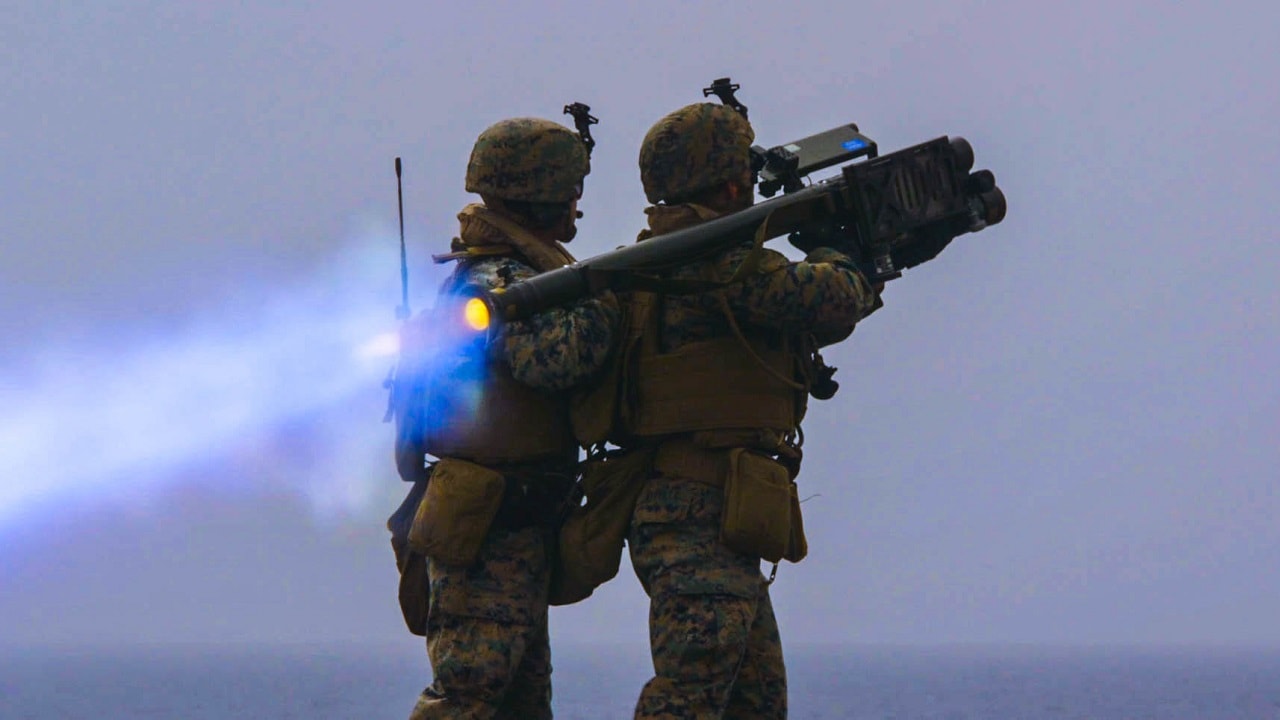Like killer bees on the battlefield, Stinger shoulder-fired anti-aircraft missiles are still punishing Russian aircraft and reminding the invaders that they do not have air superiority over Ukraine. A recent video showed a Stinger striking a Russian Orlan-10 drone and blasting it out of the sky. The Ukrainian soldier simply pointed the launcher and fired the missile, the Stinger guidance system took over and eliminated the unmanned craft.
It Goes Back to the Soviet Experience in Afghanistan
Once the king of the battle space in Afghanistan when the CIA supplied the Stinger MANPAD (man-portable air defense system) in the 1980s to blast Soviet aircraft, the Russian air force is being taught a lesson again in the war in Ukraine. The Stinger is still making Russia pay.
Quick and Deadly Kill Chain
SOFREP.com describes the Stinger as having “good effect on target.” That’s an understatement. Stingers have been especially effective against low-flying attack helicopters. It seems Russia is hardly concerned despite losing their vaunted choppers to the Stinger. It’s a simple kill chain. Helicopters fly over farmland. The defenders hide in a wooded section of the field and the Stinger does the rest. It continues to bleed the Russians.
The Americans Had to Order More
The United States has sent about 1,400 Stinger systems to Ukraine – so many that it had to place a backfill order of 1,300 Stingers in a $624 million contract to Raytheon Technologies in late May to make up the difference. Germany has also sent Stingers to Ukraine.
Not Just Ukraine
Before the war in Ukraine, the Stinger had been effective in other conflicts – four different wars saw Stinger destruction with a 90 percent success rate. It has “270 fixed- and rotary-wing intercepts to its credit and is deployed in 19 nations,” according to Raytheon.
#Ukraine: Ukrainian forces using a US-donated Stinger MANPADS to take down a Russian drone- the type is not visible, but is said to be a common Orlan-10. pic.twitter.com/uPnjVmPeTM
— 🇺🇦 Ukraine Weapons Tracker (@UAWeapons) June 21, 2022
Many Features Set It Apart
The U.S. military began using proximity fuses for the Stinger’s 6.6 pound warhead in 2019 to make targets easier to destroy. The launcher itself is relatively light weight at 35 pounds loaded with a missile. The missile uses a passive infrared seeker. “The infrared seeker can lock on to the heat the target is producing. It is called a ‘passive’ seeker because, unlike a radar-guided missile, it does not emit radio waves in order to ‘see’ its target,” according to Marshall Brain and Patrick J. Kiger writing in How Stuff Works.
Fire, Forget, and Duck and Run If Needed
Since the missile is not wire-guided, it is fire and forget. Users do not have to sight it all the way into the target. Soldiers can shoot and then move immediately to a covered and concealed position before the aircraft counter-fires.
Simple to Use
It has a range of up to 11,000 feet with a five-mile range and is accurate due to its infrared seeker. New users take to it immediately. With the help of a spotter communicating with forward observers, the soldier points at the target, waits for the noise that signifies a “lock,” and pulls the trigger.
History Repeats
It is ironic that another Russian aerial invasion has been stalled by Stinger missiles. Russia has a qualitative and quantitative advantage in fighter jets and attack helicopters – just like in Afghanistan – and the Stingers are answering the call to eliminate this advantage. Operation of the Stinger can be handled by Ukrainian reserve territorial defenders or non-professional soldiers due to its ease of use.
Using the Stinger to eliminate enemy drones is also important as Russia’s unmanned vehicles are often attached to artillery units with the drones as spotters. Stinger success will help the Russian artillery from having a decided advantage when it comes to targeting the Ukrainians. The Stinger will continue to haunt the Russian air force. It is lightweight, portable, accurate, and easy to use – all aspects that make it great for asymmetric warfare when the friendly forces are outgunned and outmanned.
Now serving as 1945’s Defense and National Security Editor, Brent M. Eastwood, PhD, is the author of Humans, Machines, and Data: Future Trends in Warfare. He is an Emerging Threats expert and former U.S. Army Infantry officer. You can follow him on Twitter @BMEastwood.

